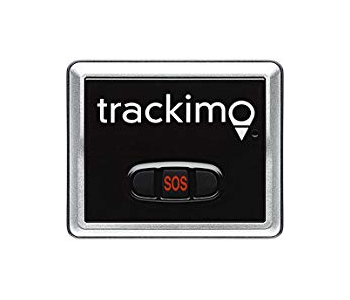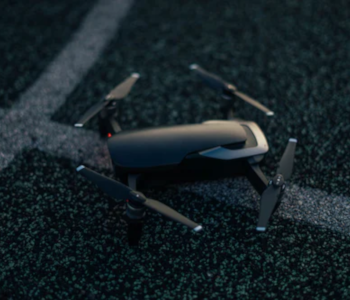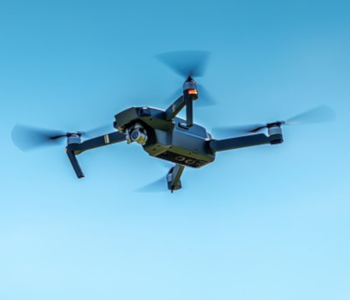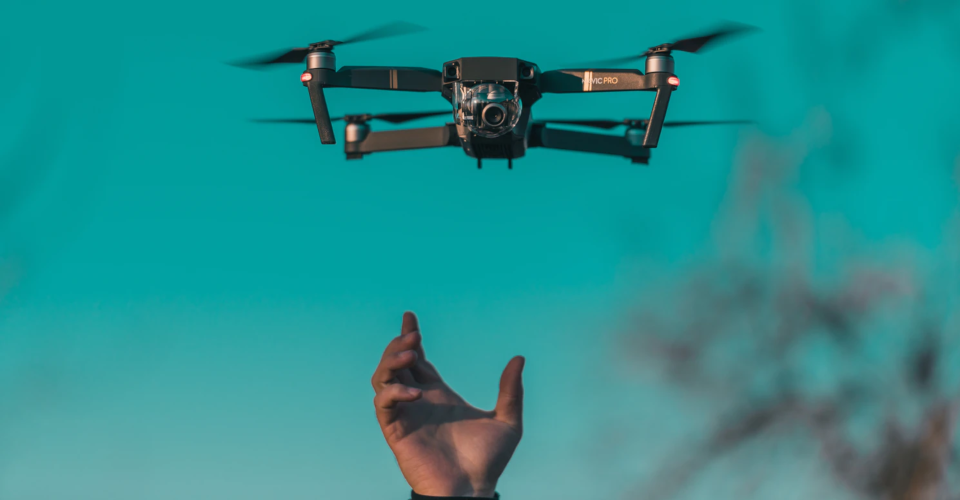What to Do When You Crash Your New Drone
The holiday season is starting, which means that a lot of people will be buying new drones or receiving them as gifts. Almost certainly, this also means that a lot of people will be crashing them in less than a month. If you have somehow found your way to this article, we hope that you’re reading this just in case you crash your drone and not after the fact.
One thing you need to know about drone crashes is that they will almost inevitably happen. Taking measures to avoid crashing your drone is important, of course, but you also need to be prepared for when they do crash. Here are some tips for easing the stress of your first potential drone crash.
Pre-emptive measures to take
Acknowledging that your drone will crash eventually is the first step towards taking a few measures to keep the damage of a crash as minimal as possible. If at all possible, we suggest doing the next few steps before taking your drone on its first major flight:
Update all firmware
The simplest safety measure you can take is to ensure that you have updated firmware on all the drone components, including your remote controller and the smart battery (if your drone has one). This ensures that your drone does not run into communication problems and all of its internal are working as intended by the manufacturer This step is particularly important if you’re flying a new drone, as its firmware has probably been updated several times since it was first launched.
Get a mini GPS tracker

When your drone crashes, the worst thing that can happen is that you aren’t able to recover it. With this in mind, taking a few redundant measures will not hurt. Attaching a small GPS tracker to your drone will provide a backup location mechanism should your drone’s batteries run out. There are a lot of them out there, but we suggest buying one that can be tracked using 3G or 4G cell signals. Trackimo is a good example.
Make a pre-flight checklist
An experienced drone pilot knows the value of a good pre-flight checklist. As a new drone pilot, this is a lesson that is worth learning early on. A pre-flight checklist helps you keep track of things to inspect on your drone to ensure that you don’t run into problems when the drone is already flying. You can come up with your own checklist, but the bare minimum entries should include an inspection of the status of the propellers, ensuring that batteries are charged, and that the drone’s sensors are functioning and calibrated.
Get a drone insurance policy
This might seem like a huge leap if you’re just flying a drone for fun. However, this is something you might want to consider if your drone costs close to or above $1000.
A drone insurance policy is exactly what it sounds like – an insurance policy specifically made for drone pilots. There are a few types of drone insurance policies but the most basic one is drone hull insurance which can cover all financial burdens of having to repair or replace a damaged drone.
You can also take this measure further and sign up for liability insurance. This will cover any charges due to any property damage or personal injury which could be the result of a drone crash. Liability insurance provides a much larger financial safety net but also costs a higher premium.
What should you do when you crash your drone?
Even with all the preparation, crashing your drone is just a matter of time. When (not IF) that happens, here are the steps to take to keep the damage low:
Recover your drone

When you crash your drone, the first order of business is to try and recover it. You can try and use the built-in GPS module of your drone if it’s still running or via a third-party GPS tracker which you hopefully attached to the drone. This shouldn’t be a huge problem if you were flying within visual line of sight unless the drone crashes in open water.
Even if you do have insurance on your drone, most policies will require that you present the damaged drone before you can make any claims. This emphasizes the importance of having a redundant GPS tracker on your drone – it’s an inexpensive accessory that can save you more than a thousand dollars.
Take the battery out
When a drone crashes, it’s safe to say that all of its components suffer through some degree of impact damage. As soon as you recover your drone, the first thing you need to do is to take the battery out. This is because damaged batteries can leak corrosive fluids or catch fire, potentially making the damage to the drone worse.
When you remove the battery, check it for any signs of damage. A few scuffs or scrapes are usually fine but be on the lookout for cracks in the casing, heavy dents, or signs of swelling. When in doubt, it’s best not to use that battery again.
Check for any physical damage
Once you have the battery safely stowed away, it’s time to check the rest of the drone for any visible damage. The propellers are usually the first things to inspect, as their soft plastic material tends to easily crack when a drone crashes. If there are any cracks at all, no matter how small, then we suggest replacing them with a new set.
You then would want to move on to the rest of the drone. Check for any cracks or dents on the drone’s landing gear, camera, gimbal, propeller arms, and frame. Unfortunately, any damage in these areas is probably beyond your repair capabilities. These can also be indicative that your drone has suffered damage in its internal components – this is something you’ll have to test later on.
Check for water damage
Water damage can be a pretty serious problem for drones because they have virtually no water resistance. Not being able to recover your drone quickly when it’s raining or crashing it in wet ground or grass can be enough to cause minor issues with its internal electronics. Crashing it in a body of water, of course, virtually guarantees that you’ll need to bring it in for professional repair.
If you suspect any degree of water damage in your drone, turn it off immediately and remove the battery. At no point should you proceed to test your drone before resolving any water-related problems. If you’re comfortable doing so, you can try opening up your drone to help dry its internal components. Take note that this will likely void any valid warranties on your drone.
Try to boot through the standard sequence
The only way to know if there are any issues with the drone’s sensors and internal circuitry is by turning it on. Your drone should then go through a standard boot-up process where it checks that its internal sensors, firmware, gimbal, camera, and other electrical components are working properly. If your drone can’t make it past the boot-up process, then it will likely require a professional repair service,
Do a test flight

Even if you make it past the boot-up process, you’re not out of the woods yet until you can make sure that your drone can fly properly. The safest way to do this is to do a test flight at low altitudes and go through the usual flight motions without straying too far. Make sure to go through all ranges of motion including pitch, roll, yaw, and gaining and reducing altitude. During the flight exercises, check if the drone’s GPS stabilization is working properly.
Contact the manufacturer
When all your attempts to troubleshoot the drone have failed, then it might be time to get in touch with its manufacturer. If you have a valid warranty, you might still be able to use it to have the drone repaired for free. If you have drone insurance, you might also want to get in touch with the insurance company to know how you need to document an insurance claim.
Depending on the advice of the manufacturer, you may have to mail your drone or bring it in to an authorized service shop.
A last word of warning – major drone brands aren’t exactly known for stellar customer service. If you do reach this point, you may have to manage your expectations when it comes to how much assistance your drone manufacturer will provide. In the absence of significant help from them, you might have to settle for a local certified drone repair shop.
File a Report With the FAA
You should consider filing a report with the FAA about your crash, especially if you are flying under a Part 107 commercial drone license. The FAA requires you to report accidents with the following situations if you are flying under Part 107:
- Your drone accident has caused serious injury to any person or any loss of consciousness; or
- The drone crash caused damage of more than $500 to any property (not including your drone).
Final thoughts
Whether you’re new to drone flight or have years of experience, a drone crash is something you still need to prepare for. The very best drone pilots know this and recognize that it’s always a possibility. For this reason, it’s prudent to have a few precautionary measures in place.
This article may have focused on what to do AFTER a drone crash, but it’s much more important to make preparations BEFORE the fact. Yes, a drone crash is inevitable, but it doesn’t have to be such a miserable experience.

